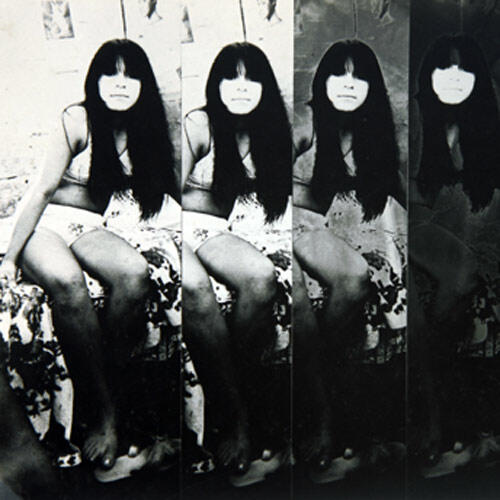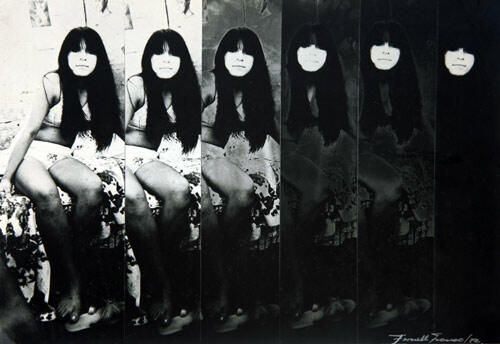PhotoEspaña 2011
various venues, Madrid, Lisboa and Cuenca
The International Festival of Photography and Visual Arts is, unquestionably, one of cultural events in Spain that grows year after year. And it does so because after fourteen editions, it continues to follow the path of a program that aspires to perfection, relying on an expositional and conceptual variety that allows a complete tour of the international panorama of photography of all times. Around seventy exhibitions featuring more than three hundred artists were the letter of introduction of PHotoEspaña 2011, the edition that marked the debut of Cuban-born Gerardo Mosquera as general curator. Under the official title of “Interfaces: Portrait and Communication”, the portrait as identity, object and element became the protagonist of a proposal which, as is becoming customary, included the participation of a considerable number of Latin American artists.

Under the title of “Un mundo feliz” (”A Happy World”), Casa de América presented for the first time outside of Panama different works by Carlos Endara Andrade (Ibarra, Ecuador, 1867-Panama City, 1954), one of the pioneers of photography in the region, who set up one of the first photographic studios in the area in the early 20th century. The images evoke a happy and wealthy Panamanian society making no distinctions between its different components and ethnicities, a society in which a wide spectrum of the human condition can be perceived, and which, as of the 1930s, begins to darken as a result of political corruption. This space also featured “The Louvre and Its Visitors,” a tour of the work produced over almost four decades by Alécio de Andrade (Rio de Janeiro, Brazil, 1938-Paris, France, 2003), shots taken in the corridors of the Paris museum that gave rise to photographs exuding humor and endearment.
The Círculo de Bellas Artes presented “Burning Camera: Prostitutes”, which allowed visitors to enjoy a series of pictures taken by Fernell Franco (Versalles, Colombia, 1942-Cali, Colombia, 2006) of local prostitutes in the port of Buenaventura during the 1970s, and which captured, in the manner of a narrative, the hidden (or attemptedly concealed) reality of a society, in this case the rural one, as contrasted with the more developed sectors. The author’s technique involving constant experimentation with new chemical products and collages rendered Franco’s expression an inspiration for Cali’s cinematographic movements of the 1980s.
The Cervantes Institute hosted “Peso y levedad” (Weight and Lightness), an interesting group show that featured the results of the portfolio view program organized in the cities of Managua and Cartagena de Indias. Fifteen photographers were selected to represent a Latin America marked by certain common elements transcending its geopolitical boundaries and struggling between a normalization of violence and a constant fight in favor of humanism, built upon a fragile democracy pervaded with political euphemisms. With a critical sense of what they understand to be the meaning of “resistance”, these authors incite, in a way, the recovery of a good sense they believe has dissolved. A curious inclusion was that of the work of the Mexican Frank Montero, born in the mid-19th century and whose artistic trajectory is unknown, in the exhibition
“1000 Faces / 0 Faces / 1 Face”, featured in the Sala Alcalá 31, accompanying Thomas Ruff and Cindy Sherman. The contrast, evident in the chronology, with the two contemporary artists, decreases as soon as the concepts of identity and representation are analyzed. The Museu Colecção Berardo de Lisboa joined the festival for a new edition, exhibiting Alfredo Jaar’s (Santiago, Chile, 1956) “Cien veces Nguyen” (“A Hundred Times Nguyen”) in which a young refugee is the protagonist in an installation which, through the repetition of the same face, poses reflection on the distance between the First and the Third World.
In the margins of the official section, the Off Festival presented some interesting proposals in terms of Latin American photography. Blanca Soto Gallery showcased the work of Claudia Jaguaribe (Rio de Janeiro, Brazil, 1955) on the urban landscapes of her native city; Fernando Pradilla hosted a double exhibition featuring the production of Fernando Montiel Klint (Mexico DF, Mexico, 1978) and Manuel Archaín (Buenos Aires, Argentina,
1983); La Caja Negra opted for Cao Guimarães’s (Belo Horizonte, Brazil, 1965) “real landscapes”, while Pilar Serra Gallery exhibited works by Magdalena Correa (Santiago, Chile, 1968).
-
 Fernell Franco, Untitled. From the series "Prostitutes" - 1970-72. Courtesy: Fernell Franco, Cali.
Fernell Franco, Untitled. From the series "Prostitutes" - 1970-72. Courtesy: Fernell Franco, Cali.
Sin título. De la serie "Prostitutas" - 1970-72. Cortesía: Fernell Franco, Cali.




